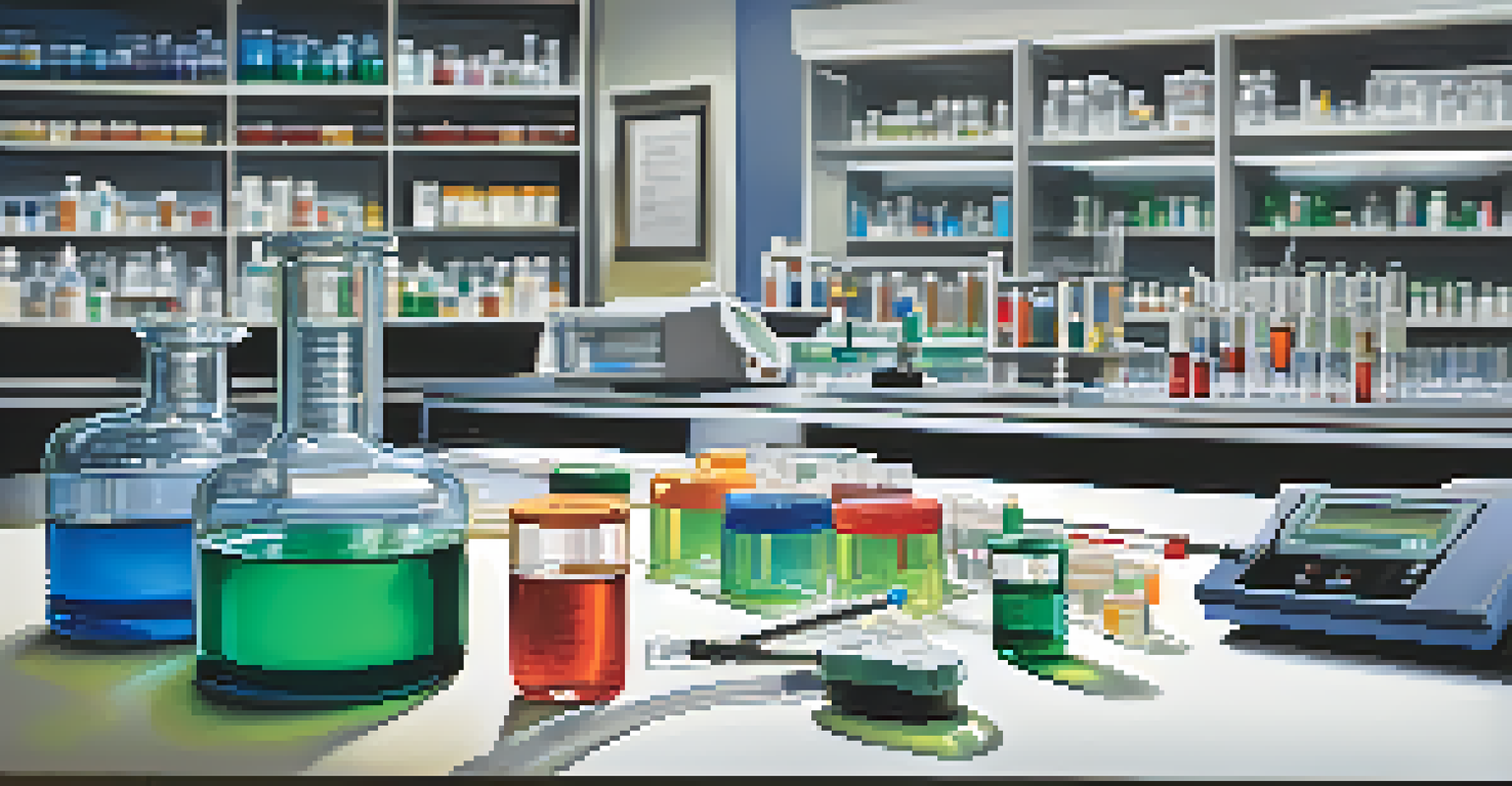Hallucinogenic Substances: Identification in Emergency Settings

Understanding Hallucinogenic Substances and Their Effects
Hallucinogenic substances are drugs that alter perception, mood, and cognitive processes. Common examples include LSD, psilocybin mushrooms, and mescaline. These substances can lead to vivid visual or auditory hallucinations, which can be distressing for users and those around them.
Hallucinogens can lead to profound experiences that may alter one's perception of reality, but they can also bring about challenging and distressing situations.
In emergency settings, understanding the effects of these substances is crucial. For instance, a person under the influence may exhibit extreme anxiety or confusion, which can complicate medical assessments. Recognizing these symptoms can help medical professionals provide appropriate care.
Moreover, the experience of hallucinations varies widely among individuals. Factors such as dosage, setting, and personal psychology can influence how someone reacts. Therefore, a nuanced understanding of these effects is essential for effective intervention.
Identifying Common Hallucinogens in Emergency Cases
In emergencies, quick identification of the substance involved can guide treatment. Common hallucinogens include LSD, which is often found in small squares of paper, and psilocybin, typically found in dried mushrooms. Knowing the appearance and common forms of these drugs can aid in their identification.

Another widely used hallucinogen is DMT, which might be encountered in a smokable form or as a brewed tea called ayahuasca. Familiarity with these substances can help emergency responders make informed decisions quickly. Visual cues, such as packaging or residue, can also provide important clues.
Understanding Hallucinogen Effects
Hallucinogenic substances alter perception and mood, leading to varied experiences that can complicate emergency care.
However, not all hallucinogens are easily identifiable, especially if they are mixed with other substances. This uncertainty can pose challenges in emergency situations, underscoring the need for thorough assessments and appropriate testing to confirm the substance involved.
Recognizing Symptoms of Hallucinogen Use
Recognizing the symptoms of hallucinogen use is vital in emergency settings. Common signs include dilated pupils, increased heart rate, and unusual behavior. Patients might exhibit heightened emotional responses or display confusion about their surroundings.
In emergencies, understanding the nuances of substance use is crucial for providing effective care and support.
In some cases, users may become agitated or paranoid, leading to aggressive behavior. This can create safety concerns for both the individual and medical personnel. Understanding these symptoms helps responders maintain a calm and controlled environment while providing necessary care.
Additionally, some users may experience 'bad trips,' characterized by intense fear or panic. These situations require sensitive handling, as the emotional state of the individual can significantly impact their response to treatment and support.
Differentiating Between Hallucinogens and Other Substances
In emergency situations, it’s essential to differentiate hallucinogens from other substances, such as stimulants or depressants. Stimulants like cocaine or methamphetamine can mimic some symptoms of hallucinogen use, such as increased energy or agitation. This overlap can complicate diagnosis and treatment.
Conversely, depressants like alcohol or benzodiazepines may lead to confusion but typically do not cause hallucinations. This distinction is crucial for determining the right course of treatment. By carefully assessing the symptoms and potential substances involved, responders can tailor their approach.
Identifying Hallucinogens Quickly
Quick identification of hallucinogens like LSD and psilocybin in emergencies is crucial for guiding effective treatment.
Medical personnel often rely on a combination of physical examination, history taking, and toxicology screening to make accurate distinctions. Each case can present a unique puzzle, and thorough evaluation is key to effective care.
Importance of a Comprehensive Patient History
Obtaining a comprehensive patient history is an integral part of identifying hallucinogenic use in emergencies. Questions about recent drug use, underlying health conditions, and current medications can provide critical context. This information helps healthcare providers make more informed decisions.
Family members or friends accompanying the patient can offer valuable insights as well. They may be aware of specific substances the individual has taken or any previous experiences with hallucinogens. This collaborative approach can enhance the accuracy of assessments.
However, it’s important to approach this conversation delicately, as individuals may be reluctant to disclose drug use due to stigma or fear. Creating a non-judgmental environment encourages openness and allows for better patient outcomes.
Utilizing Toxicology Screening in Emergency Settings
Toxicology screening plays a crucial role in identifying hallucinogenic substances during emergencies. These tests can quickly reveal the presence of specific drugs in the system, aiding in diagnosis and treatment. However, not all hallucinogens are detectable through standard screenings, which can pose challenges.
For example, substances like LSD may not show up on routine toxicology tests, necessitating further investigation. In contrast, tests for substances like psilocybin are becoming more common as awareness increases. Understanding the limitations and capabilities of these tests is vital for emergency responders.
Importance of Patient History
A comprehensive patient history enhances the understanding of hallucinogen use, aiding in accurate diagnosis and care.
Integrating toxicology results with clinical observations enhances the overall understanding of the patient’s condition. This comprehensive approach allows medical personnel to provide targeted interventions and improve patient care.
Best Practices for Managing Hallucinogen-Related Emergencies
Managing hallucinogen-related emergencies requires a combination of medical expertise and compassionate care. First responders should prioritize creating a safe and calm environment for the individual. This can help mitigate anxiety and prevent escalation of distressing symptoms.
Providing reassurance and clear communication can significantly enhance the patient’s experience. Explaining what is happening and what to expect can help reduce fear and confusion. Moreover, involving mental health professionals when necessary can provide additional support.

Monitoring the patient’s vital signs and emotional state is crucial throughout the process. This ongoing assessment allows medical personnel to respond effectively to any changes, ensuring the best possible outcome for the individual in crisis.